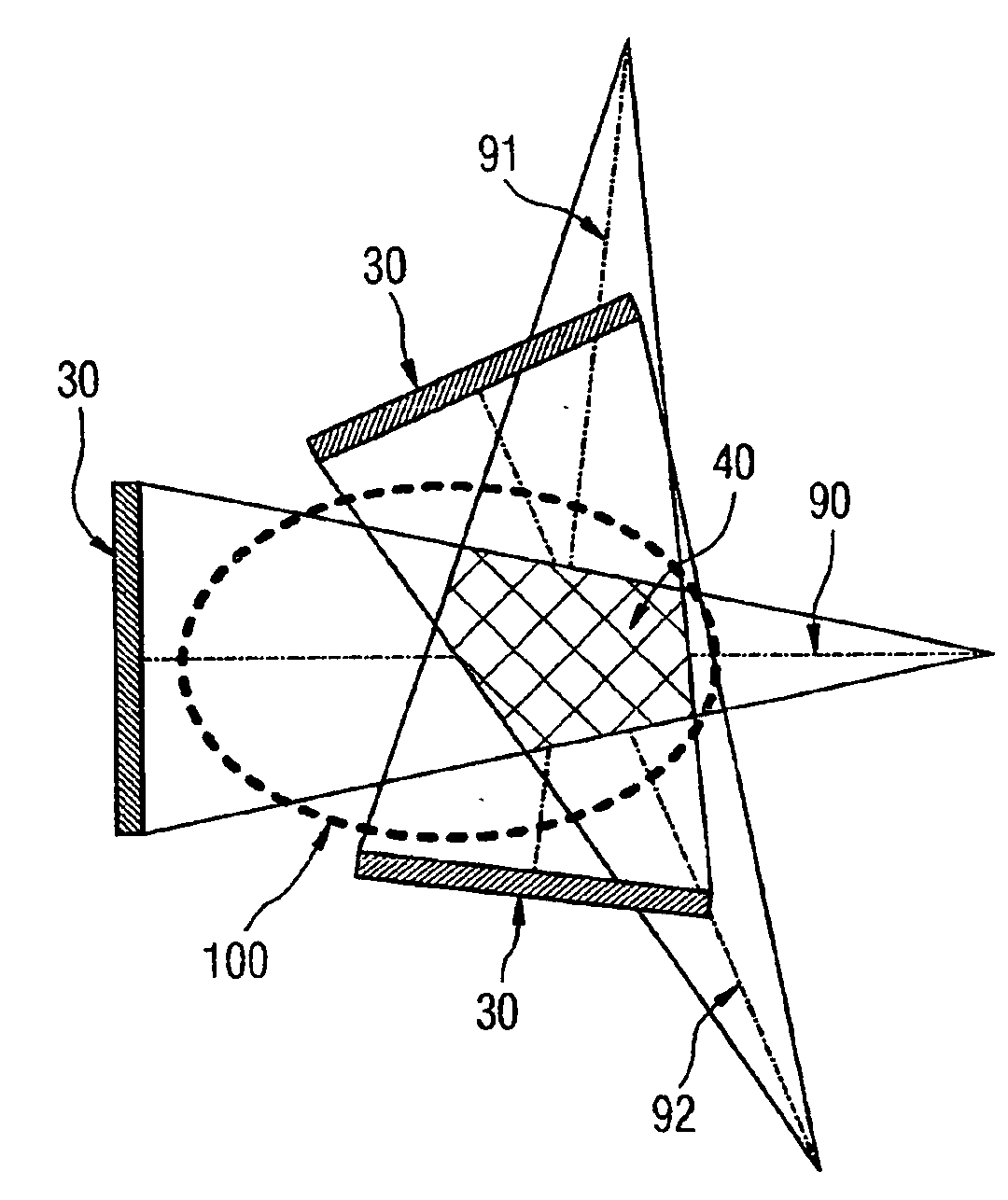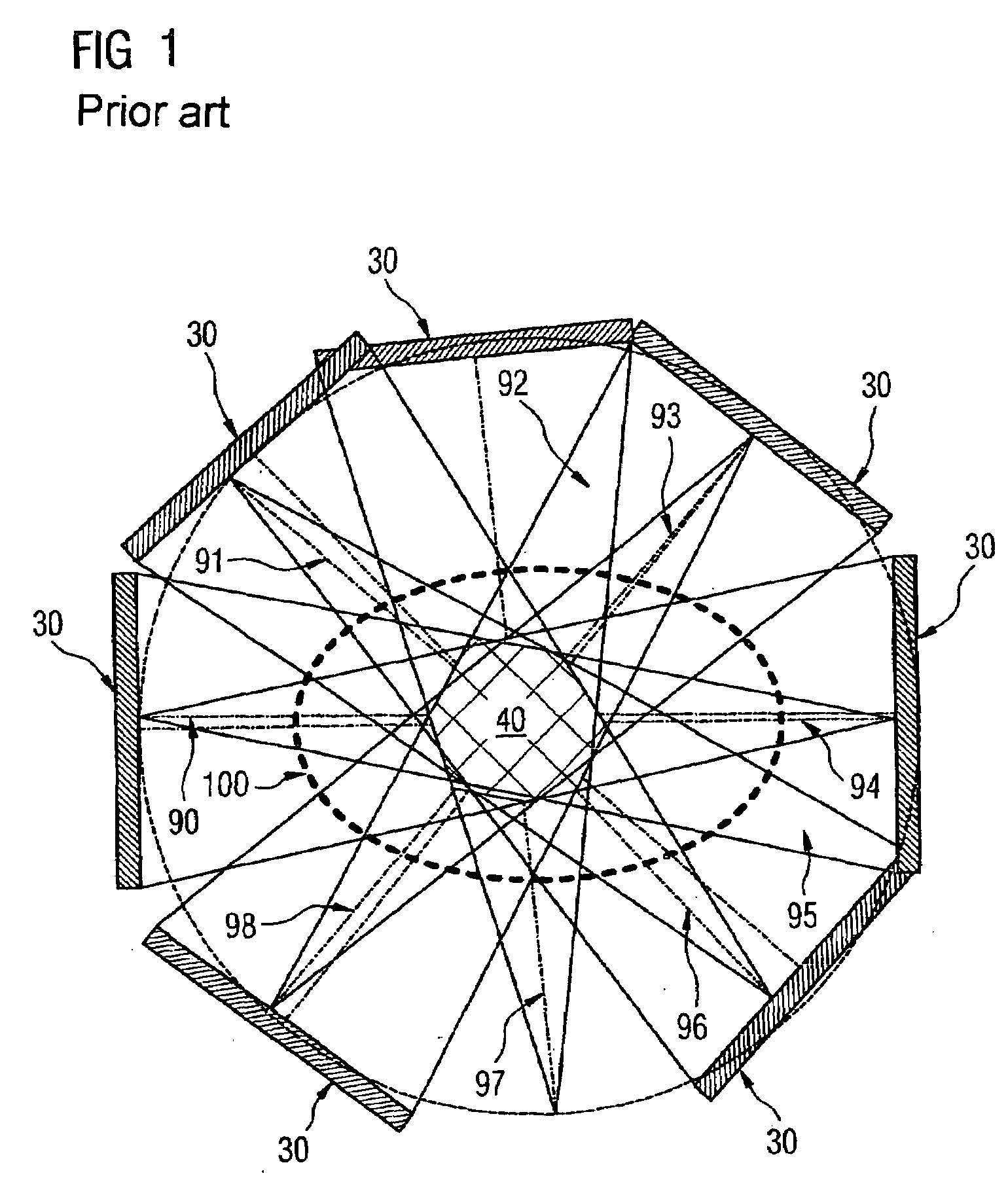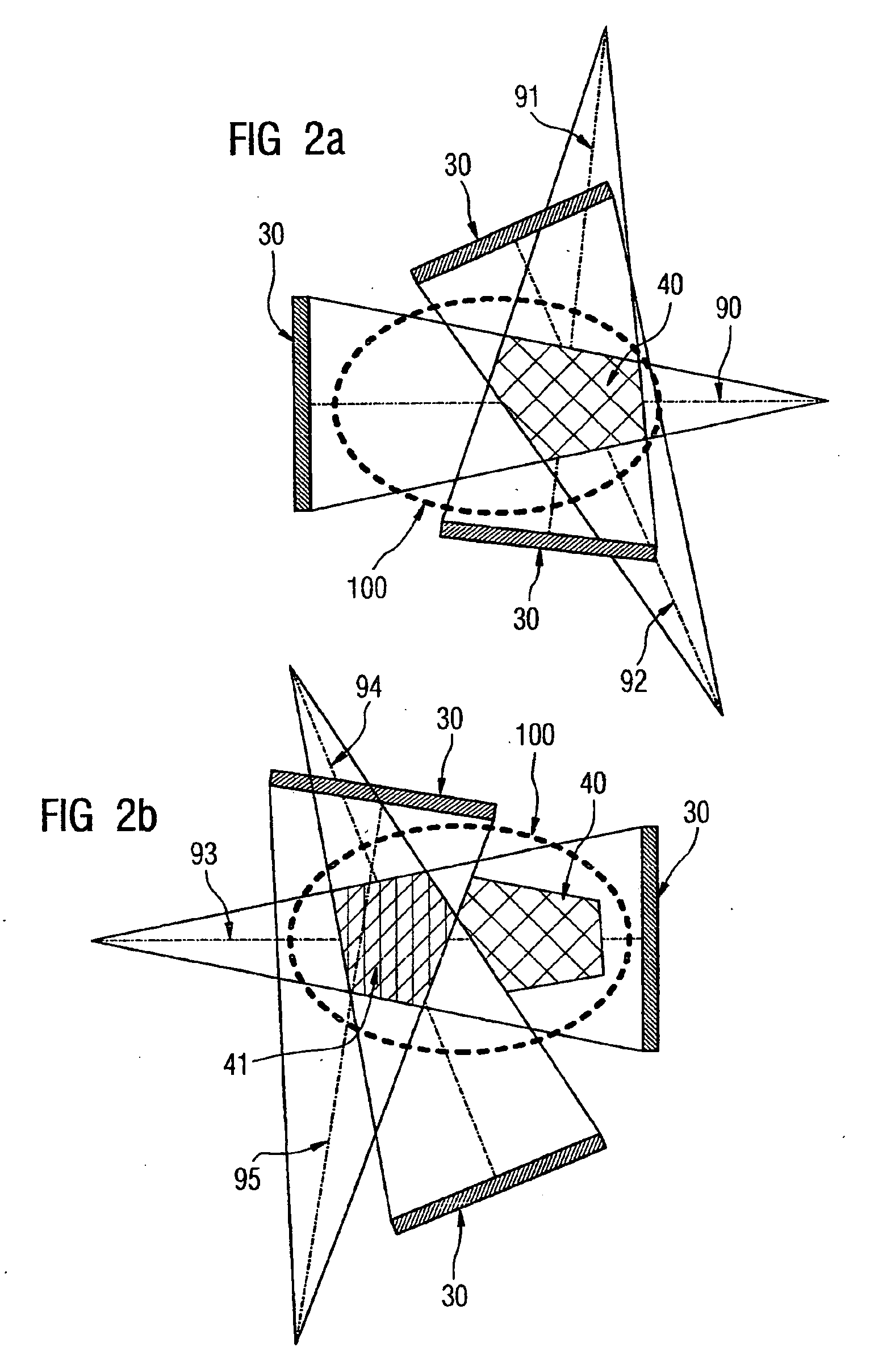Method for generating a medical image and a medical imaging system
a medical image and imaging system technology, applied in the field of medical image generation and medical imaging system, can solve problems such as a certain amount of experience on the part of the operator
- Summary
- Abstract
- Description
- Claims
- Application Information
AI Technical Summary
Benefits of technology
Problems solved by technology
Method used
Image
Examples
Embodiment Construction
[0031]FIG. 1 shows the prior art. Conventionally, the emission source 20 (not illustrated) and the detector 30 are rotatably arranged in the form of a surface around an isocenter. This causes a movement of the emission source 20 and of the detector 30 on an orbit, shown by a peripheral broken line in FIG. 1. The emission source 20 generates a beam and emits this at different angles, each of which is detected as object irradiation 90 to 96 by the corresponding detector 30 that rotates with it. The beam pattern is shown in the shape of a cone with the emission source 20 (not illustrated) generating the beam in the acute angle of the beam path of the object irradiations 90 to 98. The overlap area of these object irradiations 90 to 96 close to the isocenter forms the three-dimensional reconstruction volume 40, with it also being necessary to allow beam paths to pass through outside the drawing plane of the object 100 in order to form the three-dimensional reconstruction volume 40.
[0032]...
PUM
 Login to View More
Login to View More Abstract
Description
Claims
Application Information
 Login to View More
Login to View More - R&D
- Intellectual Property
- Life Sciences
- Materials
- Tech Scout
- Unparalleled Data Quality
- Higher Quality Content
- 60% Fewer Hallucinations
Browse by: Latest US Patents, China's latest patents, Technical Efficacy Thesaurus, Application Domain, Technology Topic, Popular Technical Reports.
© 2025 PatSnap. All rights reserved.Legal|Privacy policy|Modern Slavery Act Transparency Statement|Sitemap|About US| Contact US: help@patsnap.com



